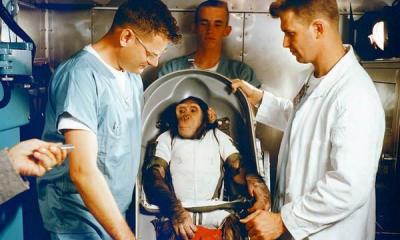Those who lived on our planet once and after, over the centuries have witnessed many epidemics and these deadly diseases can be safely called destructive and extremely difficult for life, which were equated by historians and eyewitnesses to the end of the world.
The most terrible epidemics of diseases have become executioners for many peoples, taking the lives of millions of people and wiping the population of many cities, towns, villages off the face of the planet - these terrible diseases will be discussed below.
deadly diseases
Science does not stand still, and many of the terrible diseases of mankind, which previously destroyed entire nations and were considered lethal, have disappeared forever in our time, or have become curable. However, there are diseases that have come to our time since those ancient times, which even now cause problems for doctors, and are difficult to treat, and new ailments have appeared, which are problematic to cure, although scientists do not give up and eventually defeat dangerous diseases.
![]()
About eighty million people, mostly European countries, were killed by a terrible epidemic of bubonic plague in the fourteenth century, and this is a third of the population of Europe! Plague was infected with rats, which at that time were in short supply everywhere. This deadly painful disease was spread - first by biting rats, and after people. in Europe at that time, things were not the best - the simplest rules were not followed, and so they mowed down the diseases of people - both young and children and the elderly, regardless of their social status and ranks. The plague ones looked terrible - lymph nodes enlarged to incredible sizes, skin integuments dark to black due to multiple hemorrhages and a smell!

The smell emanating from people rotting alive was simply unbearable, they died very quickly - barely infected, people fell dead on the streets, their skin darkened and there was nowhere to wait for help. The bubonic plague was nicknamed the "black death", the healers still tried to treat the sick, or provide assistance, being exposed - this is the lot of real doctors. Protecting themselves only with a hoodie and dense fabric and a mask in the form of a head of a bird of prey, which was irrigated inside and out with oils of medicinal herbs and aromatic vinegar, with the aim of at least partial disinfection, they went to the sick and provided them with all possible assistance - deadly diseases.

As such, there was simply no effective treatment for the "Black Death" at that time, but doctors knew that the plague bacillus died at one hundred degrees Celsius, so they cauterized the opened, teeming with bacteria with a red-hot poker. Alas, this radical “treatment” did not help either, the patients died out in families - after all, the cure for this disease and the like would be discovered only at the end of the nineteenth century. The dead, all their belongings, and often their homes were immediately burned, which prevented the further spread of this terrible epidemic.
leprosy - what is this disease
One of the most ancient diseases, which was mentioned in the chronicles of the tenth-fifteenth centuries before our era, found by archaeologists, the symptoms of this disease were described both in the Old Testament and in Egyptian papyri. The writings of Hippocrates also talk about leprosy, although this ancient Greek Aesculapius compared leprosy with psoriasis. The curse of the Middle Ages was leprosy, there were so many sick people that shelters for them, called leper colonies, were built everywhere.

Lepers were forbidden to leave their cloisters and had to hide their disfigured bodies under their clothes, although at that time there were doctors who were trying to at least somehow alleviate the plight of the unfortunate - treatment, albeit primitive, treatment of wounds, sympathy. Usually leper colonies were located near the walls of monasteries, which served as protection for the unfortunate and a kind of help. After all, everyone was afraid of these unfortunate crippled people, like fire - the disease was considered incurable and always ended in death after seven to eight years after infection - deadly diseases.

Only in the middle of the twentieth century it became known about more leprosy and all thanks to the infectious disease doctor of the causative agent of this systemic infectious disease. The bacterium was named after the doctor who discovered it - Hansen's bacterium. Leprosy affects the peripheral nervous system with skin, tendons and bones, a person loses sensitivity, and for this reason, frequent injuries, burns, cause disability. The townsfolk treated the unfortunate with fear and disgust, tried not to contact them.

Lepers were outcasts of society, and they themselves tried to catch the eye of healthy people less often, so as not to be beaten and ridiculed. The inhabitants of European countries encountered leprosy in the twelfth and fourteenth centuries, and these patients were subjected to no less persecution than a hundred and two hundred years ago. Leprosy served as a reason for divorce, lepers were expelled from public places, they were forbidden to use water sources available to other residents, these unfortunates were even buried by priests while still alive!

In our time, there are also leprosaria, where patients with leprosy are treated, they are helped - the disease has been studied, especially at the beginning of the process. Infection can occur only if there are wounds on the skin through direct contact with the patient, and in the leper colony there are patients only with complications or with a severe form of the disease. The rest are treated on an outpatient basis, although they are registered - deadly diseases. Farther…








